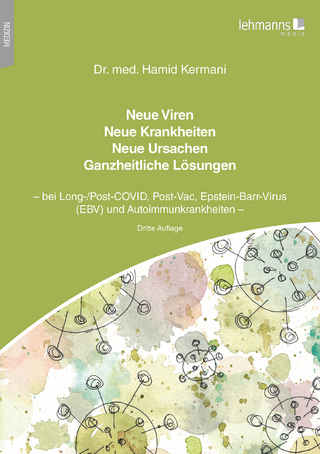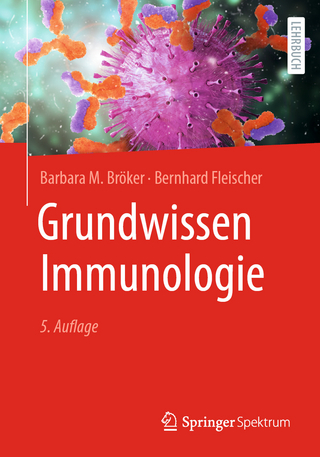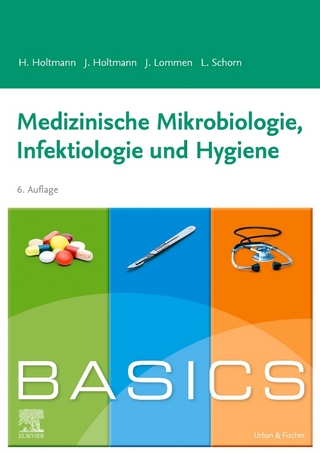
2021 Nelson's Pediatric Antimicrobial Therapy
American Academy of Pediatrics (Verlag)
978-1-61002-444-0 (ISBN)
- Titel erscheint in neuer Auflage
- Artikel merken
Drug descriptions cover all antimicrobial agents available today and include complete information about dosing regimens.
New in the 27th edition:
Continuous updates of drug and dosing changes
4 new chapters
Reorganized chapter order to improve functionality
John S. Bradley, MD has been the Director of the Division of Infectious Diseases at Rady Children's Hospital-San Diego since 1988, and is currently Distinguished Professor of Pediatrics, Division of Infectious Diseases, Department of Pediatrics, University of California, San Diego School of Medicine. He has served on the American Academy of Pediatrics Committee on Infectious Diseases (Red Book Committee) 2004-2010, and the Council of the Pediatric Infectious Diseases Society (PIDS) Council, 2007-2011 where he promoted the development of a PIDS Antimicrobial Stewardship program. John D. Nelson, MD is Professor Emeritus of Pediatrics at the University of Texas Southwestern Medical Center and Children's Medical Center, the same institution since he started his career back in 1957. At UT Southwestern he established the first formal Pediatric Infectious Disease fellowship program with Dr. Kenneth Haltalin and later Dr. George McCracken. He also went on to establish the National Pediatric Infectious Disease Seminar with Dr. McCracken and in 1982 they founded the Pediatric Infectious Disease Journal for which they continue as Chief Editors. In 1975 Dr. Nelson produced the first edition of the Pocket Book of Pediatric Antimicrobial Therapy which has gone through 20 biennial editions and is now edited by Dr. John Bradley. Elizabeth D. Barnett, MD, FAAP is Professor of Pediatrics at Boston University School of Medicine and Attending Physician at Boston Medical Center where she is Director of the Refugee Health Assessment Program and the International Clinic. Her clinical and research interests are general pediatric infectious diseases, immigrant and refugee medicine, travel medicine, and vaccines and vaccine safety. She is a Site Director for GeoSentinel (a global surveillance network for travel and migration associated health issues). Joseph B. Cantey, MD, FAAP is an Assistant Professor of Pediatrics in the Divisions of Pediatric Infectious Diseases and Neonatology/Perinatal Medicine at the University of Texas Health Science Center in San Antonio. He attended medical school at the Medical University of South Carolina before completing his pediatric residency at Johns Hopkins. He then completed dual fellowships in pediatric infectious diseases and neonatal/perinatal medicine at the University of Texas Southwestern in Dallas, Texas. His research interests include antimicrobial stewardship and responsible prescribing in the nursery setting; infection control and prevention in the nursery setting; and the pathogenesis, diagnosis, treatment, and longitudinal follow-up of congenital and perinatal infections, particularly herpes simplex virus, cytomegalovirus, and syphilis. David W. Kimberlin, MD, FAAP is the Principal Investigator for the Collaborative Antiviral Study Group (CASG), an international network of pediatric academic medical centers that evaluates antiviral therapeutics in rare diseases with a large unmet medical need, including neonatal herpes simplex virus (HSV) infections, congenital cytomegalovirus (CMV) disease, congenital Zika infection, neonatal and infantile influenza infection, and neonatal enteroviral sepsis syndrome. Studies conducted by the CASG have led to new drug indications and label changes for acyclovir, valganciclovir, and oseltamivir, and non-CASG studies conducted by Dr. Kimberlin also have led to label changes for valacyclovir. Dr. Kimberlin is Editor of the 2018 AAP Report of the Committee on Infectious Diseases (Red Book). He also was Editor of the 2015 edition, and was an Associate Editor of the 2012 and 2009 editions. Dr. Kimberlin is a Past-President of the Pediatric Infectious Diseases Society (PIDS), which is the world's largest organization of professionals dedicated to the treatment, control, and eradication of infectious diseases affecting children. He also serves as Vice Chair for Clinical and Translational Research in the UAB Department of Pediatrics, where he holds the Sergio Stagno Endowed Chair in Pediatric Infectious Diseases and is Co-Director of the Division of Pediatric Infectious Diseases. Paul E. Palumbo, MD is Professor of Pediatrics and Medicine at Geisel School of Medicine at Dartmouth College and Director, International Pediatric HIV Program at the Dartmouth-Hitchcock Medical Center. He specializes in pediatric HIV and TB disease. Jason Sauberan, PharmD is Assistant Clinical Professor at the University of California, San Diego, Skaggs School of Pharmacy and Pharmaceutical Sciences and a pediatric consultant pharmacist at the Helen Bernardy Center for Medically Fragile Children, Rady Children's Hospital San Diego. His research interests include anti-infection therapy, drugs in breast milk, parenteral nutrition, and medication safety. He serves on the Scientific Advisory Board of Mother to Baby California, and is an assistant clinical professor, UC San Diego Skaggs School of Pharmacy and Pharmaceutical Sciences. J. Howard Smart, MD, FAAP has been practicing General Pediatrics in San Diego since 1996 after completing his residency, which included working with Dr. John S. Bradley at Children' Hospital (now Rady's) in San Diego. He is Chairman of the Department of Pediatrics at Sharp Rees-Stealy Medical Group and Assistant Clinical Professor of Pediatrics in the UCSD residents' clinic. His involvement with Nelson's started with a conversation with Dr. Bradley while flying to an AAP conference, discussing his hobby of mobile app development. Dr. Smart has been an app developer since 2011, and brings together the two knowledge domains of computer science and pediatrics in creating the mobile version of Nelson's. >William J. Steinbach, MD, FAAP is the Samuel L. Katz Professor of Pediatrics; Professor in Molecular Genetics and Microbiology; Chief, Division of Pediatric Infectious Diseases; Director, Duke Pediatric Immunocompromised Host Program; and Director; International Pediatric Fungal Network at Duke University School of Medicine. His expertise is in transplant infectious diseases, specifically in invasive fungal disease in children. He leads an integrated molecular, translational, and clinical research effort toward improving our understanding of invasive fungal disease epidemiology, diagnosis, and treatment.
Introduction
Notable Changes
1. Antimicrobial Therapy According to Clinical Syndromes
2. Antimicrobial Therapy for Neonates
3. Preferred Therapy for Specific Bacterial and Mycobacterial Pathogens
4. Choosing Among Antibiotics Within a Class
5. Preferred Therapy for Specific Fungal Pathogens
6. Choosing Among Antifungal Agents
7. Preferred Therapy for Specific Viral Pathogens
8. Choosing Among Antiviral Agents
9. Preferred Therapy for Specific Parasitic Pathogens
10. Choosing Among Anti-Parasitic Agents
11. How Antibiotic Dosages Are Determined Using Susceptibility Data, Pharmacodynamics, and Treatment Outcomes
12. Approach to Antibiotic Therapy of Drug-Resistant Gram-negative Bacilli and Methicillin-Resistant Staphylococcus aureus
13. Antibiotic Therapy for Children Who Are Obese
14. Sequential Parenteral-Oral Antibiotic Therapy (Oral Step-down Therapy) for Serious Infections
15. Antimicrobial Prophylaxis/Prevention of Symptomatic Infection
16. Approach to Antibiotic Allergies
17. Antibiotic Stewardship
16. Alphabetic Listing of Antimicrobials
Appendix: Nomogram for Determining Body Surface Area
References
Index
| Erscheinungsdatum | 08.02.2021 |
|---|---|
| Mitarbeit |
Berater: Elizabeth Barnett, Joseph B. Cantey, David W. Kimberlin |
| Verlagsort | Elk Grove Village |
| Sprache | englisch |
| Maße | 121 x 171 mm |
| Gewicht | 299 g |
| Themenwelt | Medizin / Pharmazie ► Medizinische Fachgebiete ► Pädiatrie |
| Medizin / Pharmazie ► Medizinische Fachgebiete ► Pharmakologie / Pharmakotherapie | |
| Studium ► Querschnittsbereiche ► Infektiologie / Immunologie | |
| ISBN-10 | 1-61002-444-3 / 1610024443 |
| ISBN-13 | 978-1-61002-444-0 / 9781610024440 |
| Zustand | Neuware |
| Haben Sie eine Frage zum Produkt? |
aus dem Bereich


